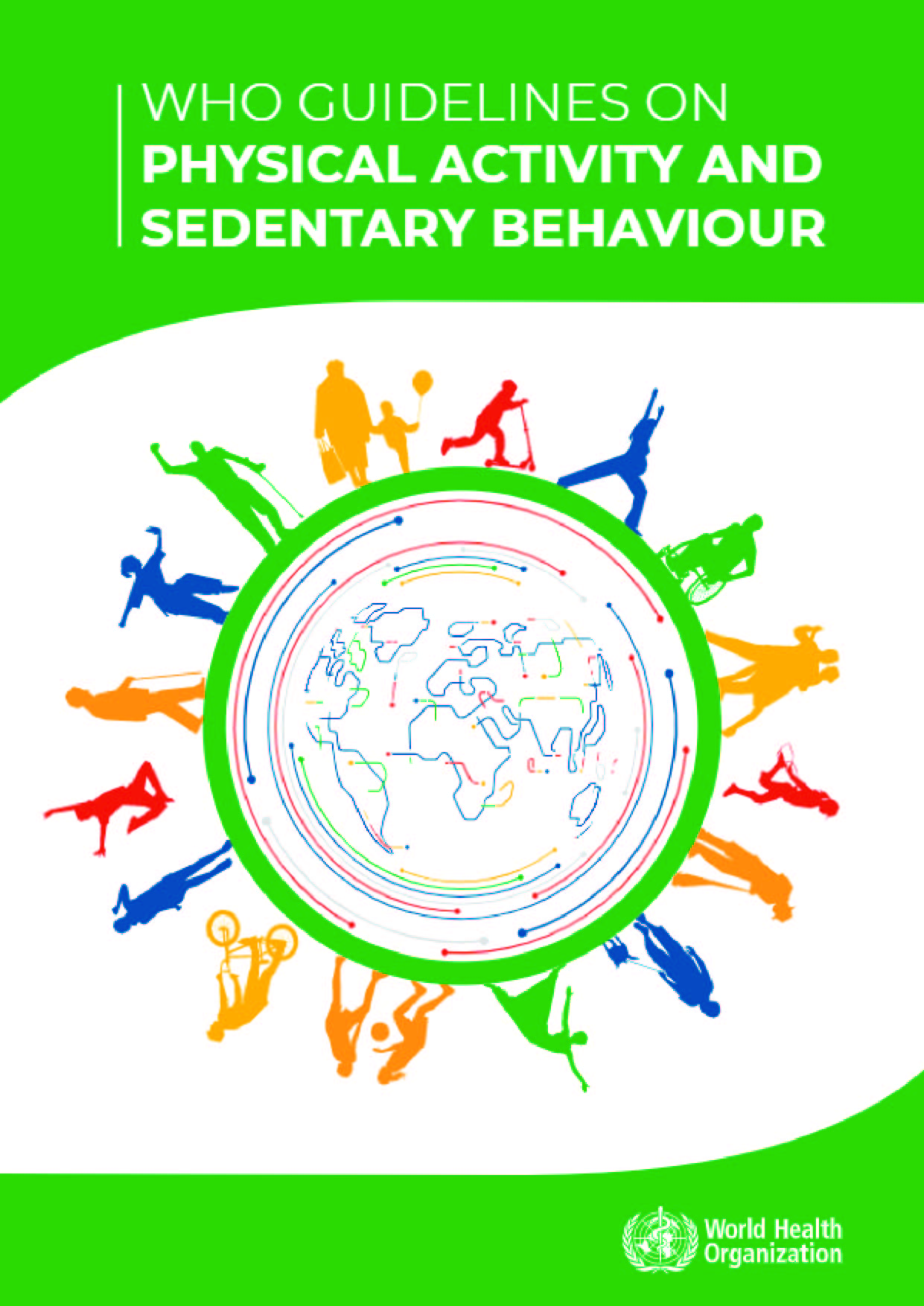Children and adolescents
In children and adolescents, physical activity confers benefits for the following health outcomes: improved physical fitness (cardiorespiratory and muscular fitness), cardiometabolic health (blood pressure, dyslipidaemia, glucose, and insulin resistance), bone health, cognitive outcomes (academic performance, executive function), mental health (reduced symptoms of depression); and reduced adiposity.
It is recommended that:
- Children and adolescents should do at least an average of 60 minutes per day of moderate to vigorous-intensity, mostly aerobic, physical activity, across the week.
- Vigorous-intensity aerobic activities, as well as those that strengthen muscle and bone, should be incorporated at least 3 days a week.
In children and adolescents, higher amounts of sedentary behaviour are associated with the following poor health outcomes: increased adiposity; poorer cardiometabolic health, fitness, behavioural conduct/pro-social behaviour; and reduced sleep duration.
It is recommended that:
- Children and adolescents should limit the amount of time spent being sedentary, particularly the amount of recreational screen time.
Adults
In adults, physical activity confers benefits for the following health outcomes: improved all-cause mortality, cardiovascular disease mortality, incident hypertension, incident site-specific cancers, 2 incident type-2 diabetes, mental health (reduced symptoms of anxiety and depression); cognitive health, and sleep; measures of adiposity may also improve.
It is recommended that:
- All adults should undertake regular physical activity.
- Adults should do at least 150– 300 minutes of moderate-intensity aerobic physical activity; or at least 75–150 minutes of vigorousintensity aerobic physical activity; or an equivalent combination of moderate- and vigorous-intensity activity throughout the week, for substantial health benefits.
- Adults should also do muscle strengthening activities at moderate or greater intensity that involve all major muscle groups on 2 or more days a week, as these provide additional health benefits.
In adults, higher amounts of sedentary behaviour are associated with the following poor health outcomes: all-cause mortality, cardiovascular disease mortality and cancer mortality and incidence of cardiovascular disease, cancer and type-2 diabetes.
It is recommended that:
- Adults should limit the amount of time spent being sedentary. Replacing sedentary time with physical activity of any intensity (including light intensity) provides health benefits.
- To help reduce the detrimental effects of high levels of sedentary behaviour on health, adults should aim to do more than the recommended levels of moderate- to vigorous-intensity physical activity.
In older adults, physical activity confers benefits for the following health outcomes: improved all-cause mortality, cardiovascular disease mortality, incident hypertension, incident site-specific cancers, incident type-2 diabetes, mental health (reduced symptoms of anxiety and depression), cognitive health, and sleep; measures of adiposity may also improve. In older adults, physical activity helps prevent falls and falls-related injuries and declines in bone health and functional ability.
It is recommended that:
- All older adults should undertake regular physical activity. Strong recommendation, moderate certainty evidence Older adults should do at least 150– 300 minutes of moderate-intensity aerobic physical activity; or at least 75–150 minutes of vigorousintensity aerobic physical activity; or an equivalent combination of moderate- and vigorous-intensity activity throughout the week, for substantial health benefits.
- OLDER ADULTS (aged 65 years and older) In older adults, physical activity confers benefits for the following health outcomes: improved all-cause mortality, cardiovascular disease mortality, incident hypertension, incident site-specific cancers, incident type-2 diabetes, mental health (reduced symptoms of anxiety and depression), cognitive health, and sleep; measures of adiposity may also improve. In older adults, physical activity helps prevent falls and falls-related injuries and declines in bone health and functional ability.
- Older adults should also do muscle strengthening activities at moderate or greater intensity that involve all major muscle groups on 2 or more days a week, as these provide additional health benefits.
- As part of their weekly physical activity, older adults should do varied multicomponent physical activity that emphasizes functional balance and strength training at moderate or greater intensity, on 3 or more days a week, to enhance functional capacity and to prevent falls.
You can read though this book from the above to explore more about the topic!











